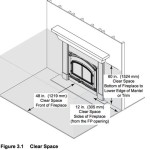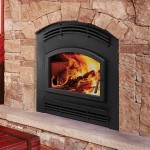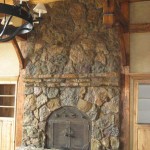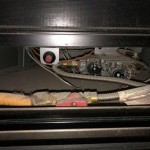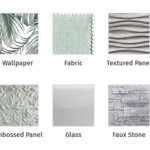Elevating Fireplace Aesthetics with Stone Work
Fireplaces serve as focal points within living spaces, providing warmth, ambiance, and architectural interest. The integration of stonework around a fireplace amplifies these qualities, adding a distinct character and visual appeal. Stonework offers a range of textures, colors, and styles, allowing homeowners to customize their fireplaces to complement diverse interior designs. This article explores the various facets of stonework around fireplaces, covering material selection, design considerations, installation techniques, and maintenance practices.
Material Selection for Fireplace Stonework
The selection of stone for a fireplace project significantly impacts the overall aesthetic and durability. A variety of natural and manufactured stone options are available, each with its own set of properties and characteristics.
Natural Stone: Natural stone encompasses materials quarried directly from the earth, including granite, marble, limestone, slate, and fieldstone. Each type possesses unique veining, coloration, and texture. Granite is recognized for its durability and resistance to heat, making it suitable for fireplace surrounds. Marble offers a luxurious appearance, characterized by intricate veining patterns and a polished surface. Limestone presents a more subtle and uniform appearance, available in various neutral tones. Slate showcases a layered texture and is known for its heat resistance and durability. Fieldstone, typically sourced from local fields or riverbeds, provides a rustic and organic aesthetic.
Manufactured Stone: Manufactured stone, also known as cultured stone or faux stone, is a composite material designed to replicate the look and feel of natural stone. It is typically made from a mixture of cement, aggregates, and pigments. Manufactured stone offers several advantages, including lighter weight, easier installation, and greater consistency in color and texture compared to natural stone. It is also often more cost-effective. However, it may not possess the same level of durability and natural variation as natural stone.
When selecting stone material, consider the following factors: aesthetic preferences, budget constraints, structural requirements, and the overall design scheme of the room. Samples should be examined under different lighting conditions to ensure the chosen stone complements the existing décor.
Design Considerations for Fireplace Stonework
The design of fireplace stonework is crucial for achieving the desired aesthetic and functionality. Several design factors warrant careful consideration, including the size and shape of the fireplace, the style of the stonework, and the integration of other architectural elements.
Fireplace Size and Shape: The dimensions of the fireplace opening and the surrounding wall space influence the scale and proportion of the stonework. For smaller fireplaces, a minimalist design with clean lines may be appropriate. Larger fireplaces can accommodate more elaborate stonework designs, such as full-wall cladding or the incorporation of decorative features.
Stonework Style: The style of stonework should complement the overall design aesthetic of the room. Several popular styles include:
- Rustic: Characterized by irregular shapes, rough textures, and earth tones, creating a natural and organic feel. Fieldstone or dry-stacked stone is often used in rustic designs.
- Modern: Featuring clean lines, geometric shapes, and a minimalist approach. Large-format stone tiles or panels with a smooth finish are common in modern designs.
- Traditional: Emphasizing symmetry, refined details, and classic materials. Marble or limestone with intricate carvings or moldings are often used in traditional designs.
- Contemporary: Blending elements of modern and traditional styles, creating a balanced and sophisticated look. A mix of natural and manufactured stone with varying textures and colors can be used in contemporary designs.
Integration of Architectural Elements: Fireplace stonework can be integrated with other architectural elements, such as mantels, hearths, and built-in shelving. A mantel provides a focal point above the fireplace and can be crafted from wood, stone, or metal. The hearth serves as a protective barrier between the fireplace and the surrounding floor and can be made from stone, tile, or concrete. Built-in shelving can be incorporated into the stonework design to provide storage and display space.
Furthermore, consider the color palette of the stonework in relation to the surrounding walls, flooring, and furniture. A cohesive color scheme will create a harmonious and visually appealing space.
Installation Techniques for Fireplace Stonework
Proper installation of fireplace stonework is essential for ensuring structural integrity, safety, and longevity. It is recommended to engage a qualified and experienced stonemason or contractor to perform the installation. The installation process typically involves several steps:
Surface Preparation: The surface onto which the stone will be applied must be clean, sound, and properly prepared. Depending on the substrate, this may involve applying a scratch coat of mortar to provide a bonding surface. In some cases, a metal lath may be required to reinforce the mortar bed.
Stone Cutting and Shaping: Natural stone may require cutting and shaping to achieve the desired fit and appearance. This is typically done using specialized tools, such as a wet saw or angle grinder. Manufactured stone is often available in modular units that simplify the cutting and shaping process.
Mortar Application: Mortar is used to adhere the stone to the substrate and fill the joints between the stones. The type of mortar used should be appropriate for the type of stone and the specific application. It is important to follow the manufacturer's instructions for mixing and applying the mortar.
Stone Placement: The stones should be carefully placed and aligned, ensuring proper spacing and a consistent appearance. A level and plumb line can be used to ensure that the stonework is straight and even. For dry-stacked stone, the stones are typically arranged without mortar, creating a visually striking effect.
Grouting and Finishing: Once the mortar has cured, the joints between the stones can be grouted, if desired. Grouting fills the joints and provides a smooth, finished appearance. The grout should be carefully applied to avoid staining the stone. After the grout has cured, the stonework can be cleaned and sealed to protect it from moisture and stains.
Strict adherence to safety protocols is crucial during the installation process. Eye protection, gloves, and respiratory protection should be worn when cutting, mixing, and applying mortar. The work area should be properly ventilated.
Maintenance and Care of Fireplace Stonework
Regular maintenance and care are essential for preserving the beauty and integrity of fireplace stonework. Proper cleaning and sealing can prevent staining, discoloration, and deterioration.
Cleaning: The frequency of cleaning depends on the type of stone and the amount of use the fireplace receives. Generally, stonework should be cleaned periodically to remove dust, soot, and other debris. A soft brush or vacuum cleaner can be used to remove loose debris. For more stubborn stains, a mild detergent or stone cleaner can be used. Avoid using harsh chemicals or abrasive cleaners, as these can damage the stone.
Sealing: Sealing the stonework can help protect it from moisture, stains, and other environmental factors. The type of sealer used should be appropriate for the type of stone. Some sealers are designed to enhance the color and appearance of the stone, while others provide a more matte finish. The sealer should be applied according to the manufacturer's instructions. Periodic reapplication of the sealer may be necessary to maintain its effectiveness.
Preventive Measures: Several preventive measures can help minimize the need for extensive cleaning and repairs. These include:
- Using a fireplace screen to prevent sparks and embers from damaging the stonework.
- Ensuring proper ventilation to prevent the buildup of soot and creosote.
- Addressing any cracks or damage promptly to prevent further deterioration.
By following a regular maintenance schedule and addressing any issues promptly, homeowners can ensure that their fireplace stonework remains beautiful and functional for many years to come.
In summary, fireplace stonework is a transformative element that can significantly enhance the aesthetic appeal and value of a home. The careful selection of materials, thoughtful design considerations, proper installation techniques, and diligent maintenance practices are all essential for achieving optimal results. The integration of stone around a fireplace is an investment that yields both immediate visual gratification and long-term enjoyment.

Professional Stonework Stone Fireplace Surround Hearths

Stone Fireplace Surround Ideas You Ll Love Columbia Mo

Thin Stone Veneers Make A Fireplace Update Easy

Dreamy Stone Fireplace Inspiration By Stonemason Lew French New England

Manufactured Stonework For Fireplace Surrounds Skilled Stone Masons

How To Cover A Brick Fireplace With Stone
:strip_icc()/Screenshot2021-10-19at09-16-46Portfolio-AmyBartlamPhotography-1f35ea9ec29846779a2d62b42676eff9.png?strip=all)
20 Best Stone Fireplace Ideas
.jpg?strip=all)
Tips And Tools For Professional Stacked Stone Fireplaces

11 Stone Veneer Fireplace Surround Design Trends Where To Buy

Dreamy Stone Fireplace Inspiration By Stonemason Lew French New England

